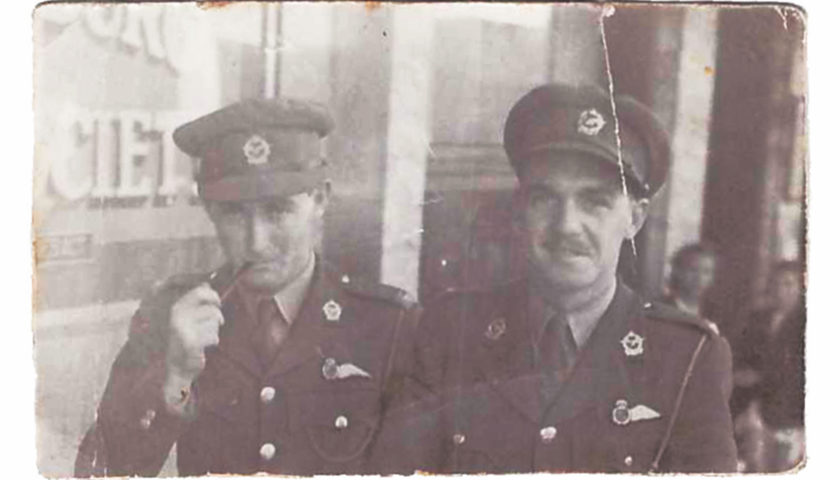The beloved song from the Pesach Seder, Chad Gadya, may sound like it’s just a children’s song, but the meaning behind the imagery is truly profound
By: Robert Sussman
Written in Aramaic, the song Chad Gadya (Aramaic for “One Kid”) is the final song sung at the Pesach Seder. Its author is unknown. Why Aramaic? Our Sages wanted to conclude the Haggadah in the same language with which it began – “Ha lachma anya…”, “This is the bread of affliction…” – so they established that Chad Gadya be said in Aramaic.[1]
Chad Gadya tells of a father who buys a kid (a young goat) for two zuzim (coins, aka silver dinars – for reference, our Sages required that a husband promise a minimum amount of 200 zuzim to be paid to a wife upon the dissolution of a marriage[2]). A cat comes and eats the kid. A dog comes and bites the cat. A stick comes and hits the dog. A fire burns the stick. Water extinguishes the fire. An ox drinks the water. A shochet slaughters the ox. The malach hamaves (angel of death) slaughters the shochet. And Hashem comes and slaughters the malach hamaves.
There are many different and far-ranging explanations (well beyond the scope of this article) for the allegory contained in the song. Because of its various interpretations, some[3] see Chad Gadya as an opportunity to expand on the discussion of the going out from Egypt (one of the Torah mitzvos of the evening!) – as the more one talks about the going out, the more praiseworthy he is – which is specifically why Chad Gadya was chosen to say at the end of the seder.
There are those[4] who say that the song pokes fun at the nations of the world and their gods. The ancient nations, including the Egyptians, served idols, just like the types of animals and things listed in the song – in fact, the Egyptians served the gedi, the kid. These nations would sculpt their gods in the images of different living creatures out of wood and stone. So too, they would worship natural forces, such as fire and water, as gods. Each nation would proudly declare that its god was greater than the god of its fellow nation.
Similarly, the Midrash[5] tells of how Nimrod asked Avraham, “Why don’t you worship fire?”, to which Avraham replied, “Why don’t you worship water, since it extinguishes fire – or the clouds, which carry the water?” And so on and so forth, until Avraham said to Nimrod that he should serve Hashem – so too we said to the Egyptians, “You serve the kid; why not serve the cat which is stronger than the kid?” And so on and so forth, as with the progression that we see in Chad Gadya, until we said to them that they should serve Hashem.
The Vilna Gaon, for example, explains that the intention of Chad Gadya is to show the development of the Children of Israel in Egypt and the chain of generations from the beginning until the end. According to him, the song is meant to be understood as follows:
One kid, one kid – these are the two goat-kids that Yaakov brought to his father[6], Yitzchak, one for the korban Pesach (the Pesach offering) and one for the korban chagigah (the festival offering) when, at Rivkah’s instruction, Yaakov impersonated his twin brother Eisav in order to receive the blessings from Yitzchak.
That father bought – it was in the merit of these two kids that our father, Yaakov, received the blessings from Yitzchak, which he then passed to his son Yosef, and which caused the brothers of Yosef to become jealous.
Then came the cat – these are the brothers who were jealous of Yosef, as it’s the nature of the cat to be jealous.
And ate the kid – the brothers sold Yosef to the Ishmaelites.
Then came the dog – this is Pharaoh.
And bit the cat – the brothers of Yosef were enslaved to the Egyptians.
Then came the stick – this is the staff with which Moshe did the signs (and on which was engraved the abbreviation of the ten plagues).
And struck the dog – struck Pharaoh.
Then came the fire – this is the yetzer harah (the evil inclination) of idol worship.
And burned the stick – the fire of idol worship destroyed the merit of Moshe’s staff – and, because of this idol worship, the Beis HaMikdash (Temple) was burned.
Then came the water – this is the Jewish people.
And extinguished the fire – with their prayers, the Jewish people overpowered the yetzer harah for idol worship and removed it from the Beis HaMikdash.
Then came the ox – this is the nation of Edom (Rome).
And drank the water – Edom exiled the Jewish people.
Then came the shochet – this is Mashiach ben Yosef (the messiah who is destined to descend from Joseph; there is another mashiach, Mashiach ben Dovid, who is destined to descend from Dovid HaMelech – King David).
And slaughtered the ox – Mashiach ben Yosef will kill Edom.
Then came the malach hamaves and slaughtered the shochet – Mashiach ben Yosef will be killed.
Then came Hashem and slaughtered the malach hamaves – and Hashem will return everything that the Jewish people lost.
Based on Haggadah Shel Pesach Mesivta





